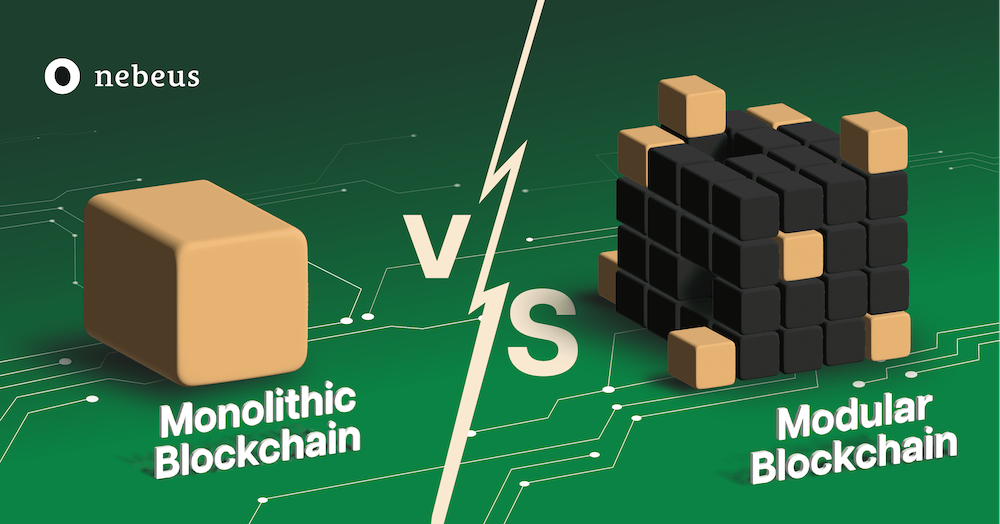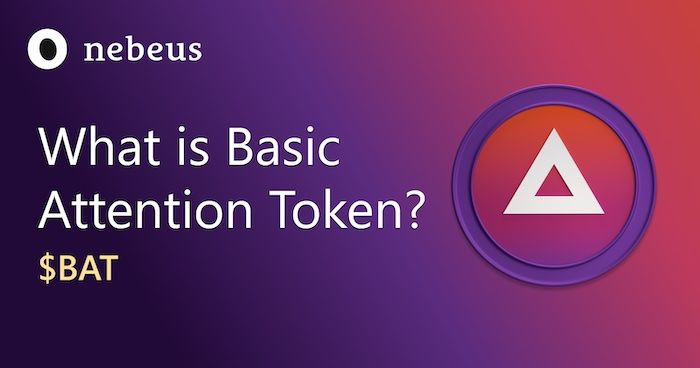In recent years blockchains have been hailed as one the most secure and community-driven aspects of the crypto revolution, so why now are we questioning them and looking at ways to improve them?
Modular blockchains are fast emerging as the answer to the inherent problems with traditional monolithic blockchains, but what exactly are modular blockchains, and how will they improve on their predecessor?
This blog will look at the key differences between modular and monolithic blockchains and how blockchain technology is rapidly advancing to help improve speed and security.
See our blog post if you want to know more about the fundamentals of blockchain.
Monolithic Blockchains
Everything (transaction, consensus, and data availability) is done on the same framework with monolithic blockchains. Since its inception, this triangle of operations has been the basic principle of blockchain and was designed to capture each activity stage within a single blockchain.
Base layer: Data layer - where transaction data is stored.
Mid layer: Consensus layer - where transactions are approved and in what order they should be.
Top layer: Execution layer - where transactions are executed.
You can go in-depth about the layers of the blockchain in our specialised blog post.
Most big blockchains, such as Bitcoin, Ethereum and Solana, run on Monolithic systems, and throughout the history of crypto, monolithic blockchains have largely been seen to be safe and secure. However, blockchain developers and users have recently begun to see some issues holding them back.
First, monolithic systems don’t allow much control for developers, and any app or feature that uses a specific blockchain has to stick to its strict rules. This goes against some of the core values of crypto, I.e. autonomy and decentralisation, as well as inhibiting community spirit.
Second, monolithic blockchains require constant upscaling of hardware to keep up with the growing number of transactions on any given system. This issue is because there needs to be more nodes to keep up with the verification process.
Last, monolithic blockchains require “bootstrapping a validator” and upholding a consensus network, reducing security as every individual chain must build its own validator set.
Let’s break this down with an easier-to-understand example:
When Apple creates phones, it doesn’t make every piece of the phone in the same building; it has multiple factories designing and creating individual parts to reduce costs and ensure that specialists can be used to create the best product possible. However, if it did decide to place the design and production all in one place, there would be significant problems in terms of cost and scalability. This is the problem with monolithic blockchains.

Modular blockchains
So what are modular blockchains, and how will they address the inherent issues with monolithic blockchains?
With modular blockchains, control is no longer centralised, i.e. processing & verifying transactions and node consensus. Instead, tasks are delegated to sidechains. Each side chain only serves one aspect of the main chain, meaning security and speed are increased due to decentralisation.
In particular, modular chains help serve apps that run on the same chain because they do not have to compete to get their transactions processed, allowing apps to run more seamlessly and provide a better user experience. Due to no longer having to take on every blockchain operation, the mainchain is separated and acts as the final stage of consensus.
A notable aspect of modular blockchains is the ability developers have to make changes without seeking approval from outside authorities. This allows them to change how they process transactions to suit their needs. This devolution of operations allows developers to become more creative and make changes that can help optimise different aspects of a blockchain.
In addition, it also brings back some of the initial decentralised and community driven philosophies of blockchain, i.e. consensus and shared decision-making. In real-time, modular blockchains could help solve existing problems, such as Ethereum’s gas issue and Bitcoins extended confirmation processes.
Brands such as Polygon, Raiden and Optimism have already begun to adopt modular blockchains, and we suspect many will follow suit in the coming months.
Another modular blockchain example is Celestia. Celestia is a project that aims to create a decentralised platform for space exploration. Its features include a multi-layered architecture, community engagement, and applications for tracking space objects and supporting space-based commerce. One of the main features of Celestia is its modular blockchain architecture, which allows for greater flexibility and scalability. The platform is designed to be composed of multiple layers, each of which can be modified or replaced without affecting the overall functionality of the blockchain. This allows for faster development and easier maintenance of the platform.
Conclusion
As the world of crypto continues to evolve, it was only a matter of time before blockchains would have to adjust to keep up.
Scaleability, speed and security have become paramount in recent years, and modular blockchains offer all three.
The shift from monolithic to modular blockchains is a welcome change for developers and blockchain users and will change how we interact, play and transact with web 3.0.
You can sign up for a Nebeus Account and bridge your crypto and cash.
La inversión en criptoactivos no está regulada, puede no ser adecuada para inversores minoristas y se puede perder la totalidad del monto invertido.










